
Dilijan: The Armenian Switzerland
Discover Dilijan, the 'Armenian Switzerland,' where lush landscapes, rich history, and vibrant culture meet to offer an unforgettable travel experience.
Dilijan, often referred to as the 'Armenian Switzerland,' is a lush town nestled in the Tavush region of Armenia. Known for its serene landscapes, Dilijan is surrounded by forests and mountains, making it a perfect getaway for nature lovers and adventurers alike. The town's pristine environment is coupled with a mild climate, providing a refreshing retreat from the hustle and bustle of city life. Dilijan is home to the Dilijan National Park, which offers a variety of outdoor activities such as hiking, bird watching, and picnicking. The park is a haven for biodiversity, boasting a rich collection of flora and fauna. Don't miss a visit to Lake Parz, a picturesque lake within the park that offers boating and fishing opportunities. The town itself is a charming mix of old and new. The Sharambeyan Street in the Old Town has been restored to showcase traditional Armenian architecture. Here, you can explore local crafts, art galleries, and museums that highlight the rich cultural heritage of the region. The town is also known for its educational institutions, including the international UWC Dilijan College, which adds a youthful and cosmopolitan vibe to the area. For those interested in history, the nearby Haghartsin and Goshavank monasteries provide a glimpse into Armenia's medieval past. These ancient sites are not only architectural marvels but also offer stunning views of the surrounding landscapes. Dilijan's culinary scene is another highlight, featuring local Armenian dishes that are sure to tantalize your taste buds. Be sure to try the famous 'Dilijan trout' and other traditional delicacies. Whether you're looking for relaxation, adventure, or a cultural experience, Dilijan has something to offer for every type of traveler. Its unique blend of natural beauty, history, and modern amenities makes it a must-visit destination in Armenia.
Local tips in Dilijan
- Visit Dilijan National Park early in the morning to enjoy the tranquility and catch sight of wildlife.
- Wear comfortable hiking shoes as the town and surroundings are best explored on foot.
- Try local specialties at family-run restaurants for an authentic culinary experience.
- Bring a jacket, even in summer, as the weather can be cool in the evenings.
- Look out for local art and craft shops on Sharambeyan Street for unique souvenirs.
- Plan a visit to the Haghartsin and Goshavank monasteries for a deeper understanding of Armenia's history.
Dilijan: The Armenian Switzerland
Dilijan, often referred to as the 'Armenian Switzerland,' is a lush town nestled in the Tavush region of Armenia. Known for its serene landscapes, Dilijan is surrounded by forests and mountains, making it a perfect getaway for nature lovers and adventurers alike. The town's pristine environment is coupled with a mild climate, providing a refreshing retreat from the hustle and bustle of city life. Dilijan is home to the Dilijan National Park, which offers a variety of outdoor activities such as hiking, bird watching, and picnicking. The park is a haven for biodiversity, boasting a rich collection of flora and fauna. Don't miss a visit to Lake Parz, a picturesque lake within the park that offers boating and fishing opportunities. The town itself is a charming mix of old and new. The Sharambeyan Street in the Old Town has been restored to showcase traditional Armenian architecture. Here, you can explore local crafts, art galleries, and museums that highlight the rich cultural heritage of the region. The town is also known for its educational institutions, including the international UWC Dilijan College, which adds a youthful and cosmopolitan vibe to the area. For those interested in history, the nearby Haghartsin and Goshavank monasteries provide a glimpse into Armenia's medieval past. These ancient sites are not only architectural marvels but also offer stunning views of the surrounding landscapes. Dilijan's culinary scene is another highlight, featuring local Armenian dishes that are sure to tantalize your taste buds. Be sure to try the famous 'Dilijan trout' and other traditional delicacies. Whether you're looking for relaxation, adventure, or a cultural experience, Dilijan has something to offer for every type of traveler. Its unique blend of natural beauty, history, and modern amenities makes it a must-visit destination in Armenia.
When is the best time to go to Dilijan?
Iconic landmarks you can’t miss
Dilijan National Park
Explore the stunning landscapes and rich biodiversity of Dilijan National Park, Armenia's natural gem for outdoor enthusiasts and peace seekers.

Goshavank Monastery
Explore Goshavank Monastery, a stunning Armenian landmark rich in history and breathtaking architecture, set against a backdrop of serene landscapes.

Kchuch Restaurant
Experience the heart of Armenian cuisine at Kchuch Restaurant in Dilijan with authentic flavors and a warm atmosphere that captures the spirit of the region.

Parz Lich
Experience the tranquility of Parz Lich, a serene lake in Dilijan National Park, perfect for outdoor adventures and relaxation amidst stunning natural beauty.

Tufenkian Old Dilijan Complex
Discover the essence of Armenian hospitality at Tufenkian Old Dilijan Complex, a blend of comfort and cultural richness in the heart of Dilijan.

Best Western Plus Paradise Hotel Dilijan
Discover comfort and elegance at Best Western Plus Paradise Hotel Dilijan, your serene getaway in Armenia's beautiful landscapes, perfect for relaxation and adventure.
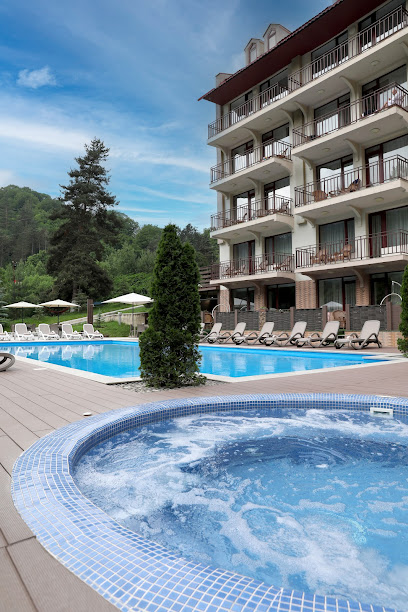
Carahunge Cafe & More
Discover the flavors of Armenia at Carahunge Cafe & More in Dilijan, where delightful dishes meet warm hospitality in a cozy setting.

Lake Parz
Discover the enchanting beauty of Lake Parz, a serene glacial lake nestled in Dilijan National Park, perfect for relaxation and outdoor adventures.

Ecokayan
Discover the tranquility of Ecokayan in Dilijan, a perfect blend of nature and luxury featuring fishing ponds and serene swimming lakes.

Flying Ostrich by Dolmama
Discover the rich flavors of Armenian cuisine at Flying Ostrich by Dolmama in Dilijan, where every meal is a delightful experience in a cozy setting.

Matosavank Monastery
Discover the tranquility and rich heritage of Matosavank Monastery, a significant Armenian landmark steeped in history and artistry.

Cozy House - Dilijan/Armenia
Discover the charm of Dilijan at Cozy House, where comfort meets tradition in the heart of Armenia's natural beauty.

Jukhtakvank Monastery
Experience the tranquility and historical richness of Jukhtakvank Monastery in the heart of Dilijan's breathtaking landscapes.

Dilijan Local Lore Museum and Art Gallery
Explore the artistic heritage of Dilijan at the Local Lore Museum and Art Gallery, a charming destination for art lovers and culture seekers.

Haghartsin Monastery Complex
Discover the serene beauty and rich history of Haghartsin Monastery Complex, a hidden gem amidst the lush landscapes of Armenia.

Unmissable attractions to see
Sevanavank Monastery
Explore the ancient Sevanavank Monastery, a serene gem on Lake Sevan's shores, offering breathtaking views and rich Armenian heritage.

Ropeway of Tsaghkadzor
Discover breathtaking views and thrilling adventures at the Ropeway of Tsaghkadzor, a must-visit attraction in Armenia's stunning landscapes.

Haghpat Monastery Complex
Experience the breathtaking Haghpat Monastery Complex, a UNESCO World Heritage Site showcasing Armenian medieval architecture and rich spiritual heritage.

Dilijan National Park
Discover the breathtaking landscapes and rich biodiversity of Dilijan National Park, Armenia's natural gem for hiking and exploration.
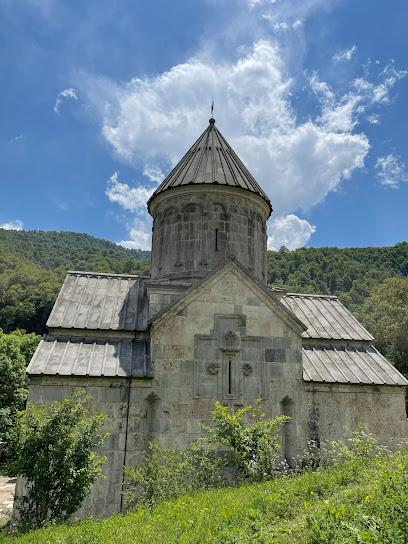
Kecharis Monastery
Discover the beauty and history of Kecharis Monastery in Tsaghkadzor, Armenia's serene spiritual retreat amidst breathtaking mountain landscapes.
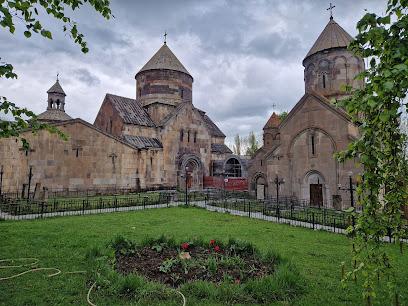
Sanahin Monastery Complex
Explore the historic and serene Sanahin Monastery Complex, a UNESCO World Heritage site rich in Armenian culture and breathtaking architecture.

Akhtala Monastery Fortress
Explore the Akhtala Monastery Fortress: a historical gem in Armenia, showcasing stunning frescoes and breathtaking landscapes.

Makaravank Monastery Complex
Discover the breathtaking Makaravank Monastery Complex, a stunning gem of Armenian architecture nestled in the serene hills, rich in history and spirituality.

Lori Castle
Explore the historic Lori Castle, a breathtaking fortress in Armenia offering stunning views and a rich tapestry of cultural heritage.

Kobayr Monastery Complex
Discover the tranquility and historical richness of Kobayr Monastery Complex, a hidden gem in Armenia's stunning Lori Marz region, perfect for spiritual and cultural exploration.

Hovhannes Tumanyan House-Museum
Discover the Hovhannes Tumanyan House-Museum in Dsegh, Armenia, where literature and culture come alive through the legacy of a national treasure.

Zip Line Tsaghkadzor
Zip Line Tsaghkadzor offers an exhilarating experience soaring above the stunning landscapes of Tsaghkadzor, Armenia's outdoor adventure paradise.

Bjni Fortress
Discover the historical treasures of Bjni Fortress, an ancient stronghold in Armenia offering stunning views and rich cultural heritage.

Sanahin Bridge
Explore the majestic Sanahin Bridge in Alaverdi, a historical site linking culture, nature, and stunning architecture in the heart of Armenia.

Dilijan Local Lore Museum and Art Gallery
Explore the Dilijan Local Lore Museum and Art Gallery, where local history meets artistic brilliance in the heart of Armenia.

Essential places to dine
Ker u Sus
Discover the heart of Armenian cuisine at Ker u Sus - a family-friendly restaurant in beautiful Dilijan.

Kchuch Restaurant
Experience authentic Armenian flavors at Kchuch Restaurant in Dilijan – where tradition meets culinary excellence in a cozy setting.

Best Western Plus Paradise Hotel Dilijan
Experience unparalleled hospitality at Best Western Plus Paradise Hotel Dilijan - where comfort meets exquisite dining in Armenia's stunning nature.

Carahunge Cafe & More
Experience authentic Armenian flavors at Carahunge Cafe & More in Dilijan - where culinary delight meets breathtaking scenery.

Getap
Discover Getap: A must-visit restaurant in Dilijan offering authentic Armenian cuisine amidst stunning landscapes.

Flying Ostrich by Dolmama
Experience modern Armenian cuisine at Flying Ostrich by Dolmama in Dilijan – where tradition meets innovation in every dish.

Papanino House
Experience authentic Armenian cuisine at Papanino House in Dilijan - where tradition meets taste in a cozy setting.
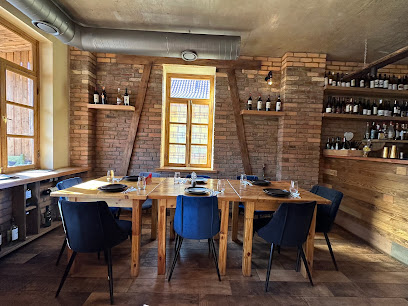
Toon Armeni Little Village
Experience authentic Armenian cuisine and warm hospitality at Toon Armeni Little Village in Dilijan – your gateway to delightful culinary adventures.

Haghartsin Hotel
Discover Haghartsin Hotel: A delightful blend of comfort and Armenian culinary excellence awaits you in the heart of Armenia.

Losh
Discover authentic Armenian flavors at Losh in Dilijan, where every dish tells a story steeped in tradition and taste.
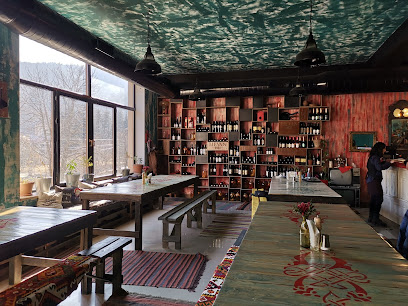
DiliJazz Hotel & Restaurant
Discover DiliJazz Hotel & Restaurant: Your gateway to authentic Armenian cuisine and serene stays in the heart of Dilijan.

Old Dilijan Winery Restaurant
Experience authentic Armenian cuisine paired with exquisite local wines at Old Dilijan Winery Restaurant in the scenic town of Dilijan.

Shaurmyan
Experience delicious fast food with an Armenian twist at Shaurmyan in beautiful Dilijan.
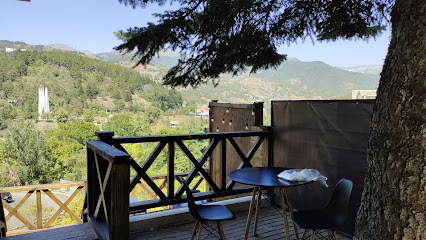
Tava Restaurant
Experience the flavors of Armenia at Tava Restaurant in Dilijan, where tradition meets modern dining amidst breathtaking landscapes.

Eco Garden, Villa Jrvezh
Experience sustainable dining amidst nature's beauty at Eco Garden, Villa Jrvezh in Dilijan – a must-visit for every traveler!

Markets, malls and hidden boutiques
The Spot DLJN
Explore The Spot DLJN in Dilijan for an enchanting café experience with specialty coffees, sweet treats, and inviting ambiance.

Tsiran
Experience the vibrant flavors and local culture at Tsiran, your go-to supermarket in the heart of Dilijan, Armenia.

Зоомагазин Royal Canin
Discover premium pet products and expert advice at Royal Canin Pet Store, a must-visit for every pet lover in Dilijan.

Old Dilijan Complex Master Wood Carving
Explore the exquisite craftsmanship at the Old Dilijan Complex, where tradition meets artistry in stunning wood carvings.

New City Supermarket
Discover the vibrant flavors of Armenia at New City Supermarket in Dilijan, your go-to destination for fresh produce and local delicacies.

Овощная лавка Эдо
Ovoshnaya Lavka Edo: Your gateway to fresh, locally sourced produce and authentic Armenian flavors in the heart of Dilijan.

Nrani
Explore Nrani in Dilijan for authentic Armenian souvenirs, showcasing the rich cultural heritage through handcrafted treasures.

ZAZOO petshop
Discover the ultimate pet paradise at ZAZOO Petshop in Dilijan, where passionate staff and quality products unite for animal lovers.

Voosh
Discover unique Armenian souvenirs and gifts at Voosh, the charming gift shop in Dilijan, showcasing local craftsmanship and creativity.

Sofi Flowers.Цветочный магазин
Experience the beauty of nature at Sofi Flowers, a vibrant flower market in Dilijan, Armenia, offering blooms, gifts, and balloon arrangements.

Inna
Experience the heart of Dilijan at Inna Market, where local flavors, crafts, and culture come alive in a vibrant atmosphere.
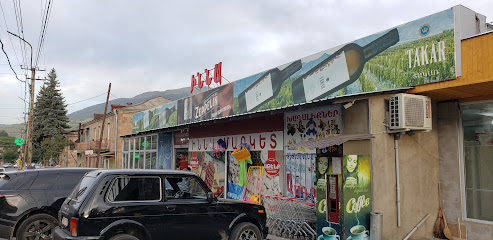
Rafayel Flowers
Discover the enchanting world of flowers at Rafayel Flowers in Dilijan, where beauty and artistry bloom in every arrangement.

Дилижан
Discover the enchanting charm of Dilijan, Armenia's picturesque haven of nature, tranquility, and rich cultural heritage.

Hndzan Wine & Spirits Shop
Explore Hndzan Wine & Spirits Shop in Dilijan for an authentic taste of Armenian wines and spirits, offering a unique experience for every visitor.

Mineral Silver Shop
Explore the exquisite craftsmanship of silver jewelry at Mineral Silver Shop in the scenic town of Dilijan, Armenia.

Essential bars & hidden hideouts
Ker u Sus
Discover the charm of family dining at Ker u Sus in Dilijan, where delicious food meets a welcoming atmosphere for all ages.

Kchuch Restaurant
Discover the rich flavors of Armenian cuisine at Kchuch Restaurant in Dilijan, where tradition meets taste in a cozy atmosphere.

Best Western Plus Paradise Hotel Dilijan
Experience unparalleled comfort and stunning nature at Best Western Plus Paradise Hotel in Dilijan, Armenia, your gateway to adventure and relaxation.

Carahunge Cafe & More
Explore the flavors of Armenia at Carahunge Cafe & More in Dilijan, a cozy dining spot offering delicious local dishes and a warm atmosphere.
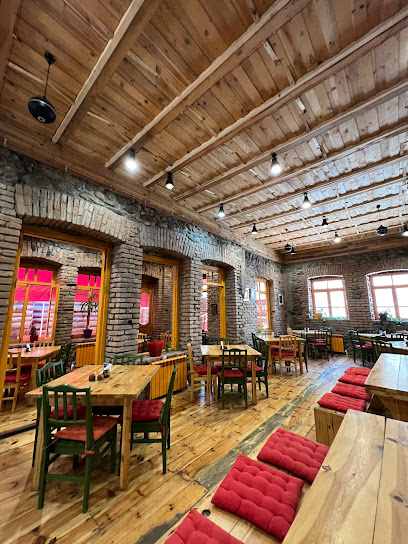
Getap
Experience the exquisite flavors of Armenian cuisine at Getap in Dilijan, where local ingredients meet a warm and inviting atmosphere.

Flying Ostrich by Dolmama
Experience the rich flavors of Armenian cuisine at Flying Ostrich by Dolmama in Dilijan, where tradition meets culinary artistry.

Papanino House
Experience authentic Armenian flavors at Papanino House, a charming restaurant in Dilijan offering a cozy ambiance and stunning views.

Losh
Experience the rich flavors of Armenia at Losh, a top-rated restaurant in Dilijan serving authentic dishes in a cozy atmosphere.

Old Dilijan Winery Restaurant
Experience authentic Armenian cuisine and exquisite local wines at Old Dilijan Winery Restaurant, a culinary treasure in the heart of Dilijan.

Tava Restaurant
Experience the essence of Armenian cuisine at Tava Restaurant, a cozy spot in the heart of Dilijan, perfect for food lovers and culture enthusiasts.

Sovats Vozni
Discover the charm of Sovats Vozni, a cozy bar in Dilijan, perfect for unwinding with local drinks and snacks after exploring Armenia's stunning landscapes.

Hovaz Wine Rooms
Experience the rich flavors of Armenia at Hovaz Wine Rooms, where every sip tells a story of tradition and craftsmanship.

Hovk Restaurant
Experience the essence of Armenian dining at Hovk Restaurant in Dilijan, where tradition meets modern culinary artistry.

Haykanoush
Discover the essence of Armenian cuisine at Haykanoush in Dilijan, where every meal is a celebration of local flavors and hospitality.

Kessab Restaurant
Discover the authentic taste of Armenian cuisine at Kessab Restaurant, Dilijan's culinary gem with a cozy ambiance and friendly service.

Local Phrases
-
- Helloբարև
[barev] - GoodbyeՑտես՝
[tsdes] - Yesայո
[ayo] - Noոչ
[voch] - Please/You're welcomeԽնդրում եմ
[khndrum em] - Thank youՇնորհակալ եմ
[shnorhakal em] - Excuse me/SorryՆերողություն
[neroghutyun] - How are you?Ինչպես ես?
[inchpes es?] - Fine. And you?Լավ եմ. Անդ դու?
[lav em. and du?] - Do you speak English?Անգլերեն խոսում ես?
[angleren khosum es?] - I don't understandԵս չեմ հասկանում
[es chem haskanum]
- Helloբարև
-
- I'd like to see the menu, pleaseԽնդրում եմ մենյունը տեսնել
[khndrum em menuyn tsel] - I don't eat meatԵս միս չեմ ուտում
[es mis chem utum] - Cheers!Կէնաձտություն!
[kenadzutyun] - I would like to pay, pleaseԽնդրում եմ վճարել
[khndrum em vcharel]
- I'd like to see the menu, pleaseԽնդրում եմ մենյունը տեսնել
-
- Help!Օրհնեա!
[orhnea] - Go away!Միացր!
[miatskr] - Call the Police!Զինվոր կարիք է զանգել
[zinvor karik e zange] - Call a doctor!Բժշկ կարիք է զանգել
[bzhsh karik e zange] - I'm lostԵս լող եմ
[es logh em] - I'm illԵս հիվանդ եմ
[es hivanad em]
- Help!Օրհնեա!
-
- I'd like to buy...Խնդրում եմ գնել
[khndrum em gnel] - I'm just lookingմիայն դիտում եմ
[miayn ditum em] - How much is it?Որքա՜ն է դա?
[vorkan e da?] - That's too expensiveԱյդը շատ թանկ է
[ayde shat tank e] - Can you lower the price?Արդարադար կարող եք առնել գինը?
[ardaradar karog ek arnel gine?]
- I'd like to buy...Խնդրում եմ գնել
-
- What time is it?Տեսակա՜ն է պահը?
[tesakan e pahy?] - It's one o'clockՄեկը է
[meky e] - Half past (10)Կազմակերտ (10)
[kazmakert (10)] - MorningԱռավոտ
[aravot] - AfternoonԿերգային
[kergayin] - EveningԵրեկո
[yerko] - YesterdayԵրեկ
[erek] - TodayԱյսօր
[aysor] - TomorrowՎաղը
[vage] - 11
[1] - 22
[2] - 33
[3] - 44
[4] - 55
[5] - 66
[6] - 77
[7] - 88
[8] - 99
[9] - 1010
[10]
- What time is it?Տեսակա՜ն է պահը?
-
- Where's a/the...?Որտեղ է ...?
[vortegh e ...?] - What's the address?Որքա՜ն է հասցեն?
[vorkan e hastsen?] - Can you show me (on the map)?Դուք կարող եք ցույց տալ (քարտուղիում)?
[duk karog ek tsuyts tal (kartughium)?] - When's the next (bus)?Երկար ավտոբուսը երբ է?
[yerkar avtobusy erb e?] - A ticket (to ....)Գինը (մինչև ...)
[gine (minchev ...)]
- Where's a/the...?Որտեղ է ...?
History of Dilijan
-
Dilijan's history dates back to ancient times, with archaeological findings indicating that the area was inhabited as early as the Bronze Age. During the medieval period, Dilijan became an important hub within the Kingdom of Armenia, serving as a strategic location along trade routes. Monasteries such as Haghartsin and Goshavank were established nearby, becoming centers of education and culture.
-
The Haghartsin Monastery, founded in the 10th century, is one of the most significant historical landmarks in Dilijan. The complex includes several churches, a dining hall, and a chapel, all adorned with intricate carvings and frescoes. Haghartsin was not only a religious center but also a place where manuscripts were copied, and knowledge was preserved during tumultuous times.
-
Goshavank Monastery, founded in the 12th century by the Armenian cleric and scholar Mkhitar Gosh, stands as a testament to medieval Armenian architecture and scholarship. The monastery complex includes a church, a school, and a scriptorium. Goshavank played a significant role in the cultural and religious life of medieval Armenia, with its school being one of the most prominent educational institutions of the time.
-
In the early 19th century, Dilijan came under the control of the Russian Empire, following the Russo-Persian Wars. The town began to develop as a resort destination due to its mild climate and mineral springs. Russian nobility and intellectuals frequently visited Dilijan, earning it the nickname 'Armenian Switzerland'. This era saw the construction of many charming wooden houses and the establishment of sanatoriums.
-
During the Soviet era, Dilijan was further developed as a resort town. The Soviet government invested in infrastructure, building sanatoriums, hotels, and recreational facilities. Dilijan attracted visitors from across the Soviet Union, who came to enjoy its natural beauty and therapeutic mineral waters. The town also became a cultural hub, with many artists, musicians, and writers choosing to reside here.
-
After the collapse of the Soviet Union, Dilijan experienced a period of economic decline. However, efforts to revive the town began in the early 21st century. Significant investments were made to restore historical buildings and develop new tourist infrastructure. The establishment of the Dilijan International School and the opening of the United World College in Dilijan marked a new chapter in the town's educational and cultural development.
-
Dilijan is renowned for its rich cultural heritage. Traditional Armenian music, dance, and crafts are integral to the town's identity. The annual 'Dilijan Arts Festival' celebrates local and international artists, musicians, and performers. The local cuisine, featuring dishes such as khorovats (Armenian barbecue) and dolma, reflects the region's culinary traditions. Handicrafts, particularly wood carving and carpet weaving, are also prominent cultural expressions in Dilijan.
-
Dilijan is often referred to as the 'green pearl' of Armenia due to its lush forests and pristine natural environment. Dilijan National Park, established in 2002, protects the area's diverse flora and fauna. The park offers numerous hiking trails, scenic viewpoints, and opportunities for wildlife observation. The combination of natural beauty and cultural heritage makes Dilijan a unique destination for eco-tourism and cultural exploration.
Dilijan Essentials
-
Dilijan is located in the Tavush Province of Armenia. The nearest international airport is Zvartnots International Airport in Yerevan, approximately 110 kilometers away. From Yerevan, you can take a taxi or a minibus (marshrutka) to Dilijan. The journey typically takes around 1.5 to 2 hours by road. Alternatively, you can take a bus from Yerevan's Northern Bus Station, which offers a scenic route through the Armenian countryside.
-
Dilijan is a small town, and many of its attractions are within walking distance. For longer trips, local taxis are readily available and relatively inexpensive. Public buses and minibuses (marshrutkas) operate within the town and connect to nearby villages. Renting a car can also be a convenient option for exploring the surrounding areas at your own pace.
-
The official currency in Armenia is the Armenian Dram (AMD). Credit cards are accepted in some hotels, restaurants, and shops, but it is advisable to carry cash, especially in smaller establishments and rural areas. ATMs are available in Dilijan, but it is wise to withdraw sufficient cash in Yerevan before traveling to ensure you have enough funds.
-
Dilijan is generally a safe destination for tourists. However, like any travel destination, it is advisable to take standard precautions. Avoid walking alone at night in unfamiliar areas and keep an eye on your belongings in crowded places. While there are no specific high-crime areas targeting tourists, it is always best to stay vigilant and aware of your surroundings.
-
In case of emergency, dial 911 for immediate assistance. The local police station and medical facilities are available in Dilijan. It is recommended to have travel insurance that covers medical emergencies. For minor health issues, there are pharmacies in the town where you can purchase over-the-counter medications.
-
Fashion: Do dress modestly, especially when visiting religious sites. Avoid wearing revealing clothing. Religion: Do respect local customs and traditions. Always cover your head when entering churches and monasteries. Public Transport: Do be respectful and give up your seat to elderly passengers. Don't eat or drink on public transport. Greetings: Do greet people with a handshake. A slight bow of the head is also a sign of respect. Eating & Drinking: Do try local delicacies and accept food offerings graciously. Don't refuse hospitality, as it is considered impolite.
-
To experience Dilijan like a local, visit the local markets where you can buy fresh produce and traditional Armenian goods. Engage with locals, as they are often friendly and willing to share stories about the town's history and culture. Don't miss visiting the Haghartsin and Goshavank monasteries, which are significant cultural and historical landmarks. For a unique experience, take a walk through the Dilijan National Park, which offers beautiful trails and scenic views.
Trending Landmark in Dilijan
-
Dilijan National Park
-
Goshavank Monastery
-
Kchuch Restaurant
-
Parz Lich
-
Tufenkian Old Dilijan Complex
-
Best Western Plus Paradise Hotel Dilijan
-
Carahunge Cafe & More
-
Lake Parz
-
Ecokayan
-
Flying Ostrich by Dolmama
-
Matosavank Monastery
-
Cozy House - Dilijan/Armenia
-
Jukhtakvank Monastery
-
Dilijan Local Lore Museum and Art Gallery
-
Haghartsin Monastery Complex
Nearby Cities to Dilijan
-
Things To Do in Tsaghkadzor
-
Things To Do in Vanadzor
-
Things To Do in Haghpat
-
Things To Do in Alaverdi
-
Things To Do in Aparan
-
Things To Do in Yerevan
-
Things To Do in Gyumri
-
Things To Do in Tbilisi
-
Things To Do in Mtskheta
-
Things To Do in Jermuk
-
Things To Do in Vayk
-
Things To Do in Ganja
-
Things To Do in Signagi
-
Things To Do in Sighnaghi
-
Things To Do in Telavi










